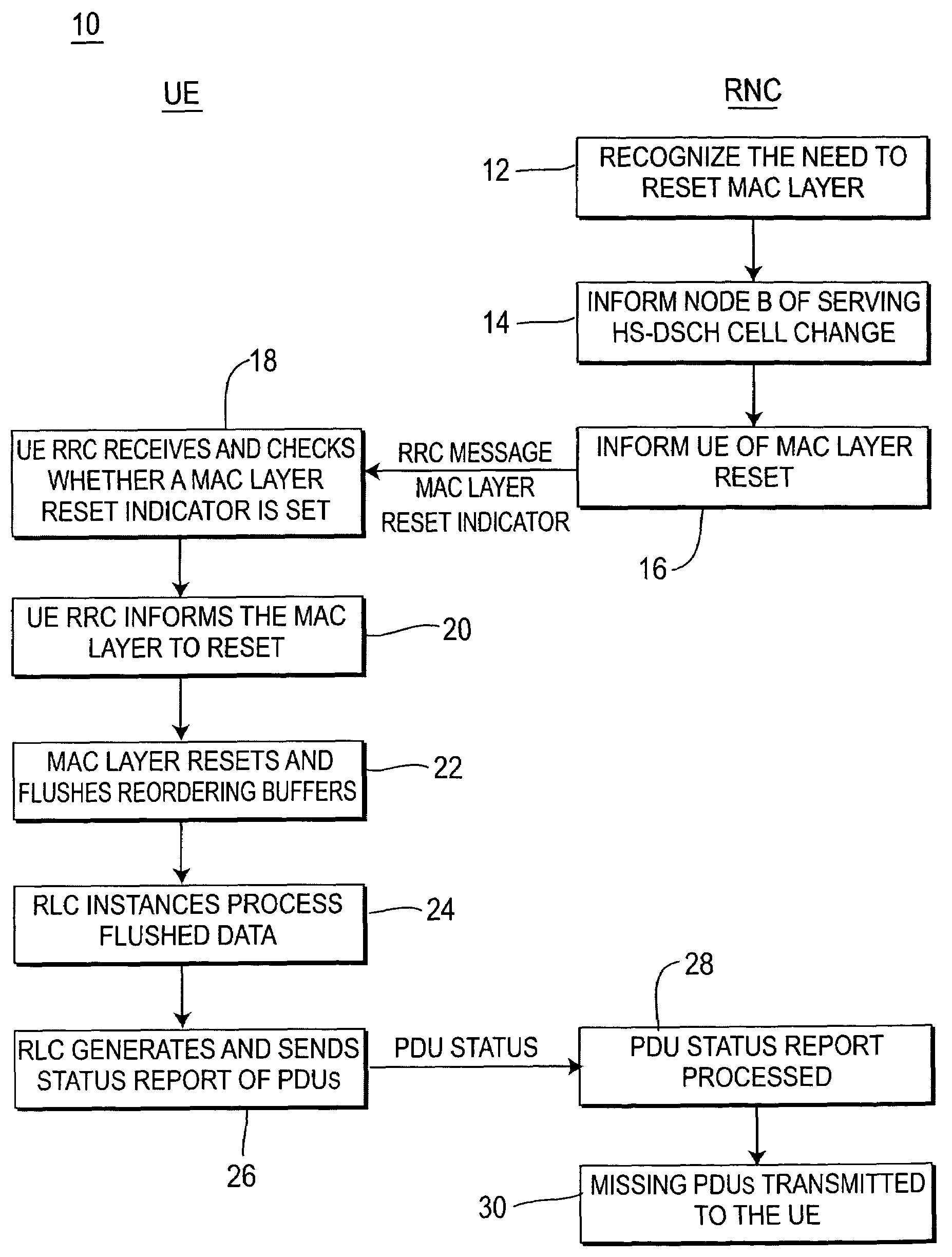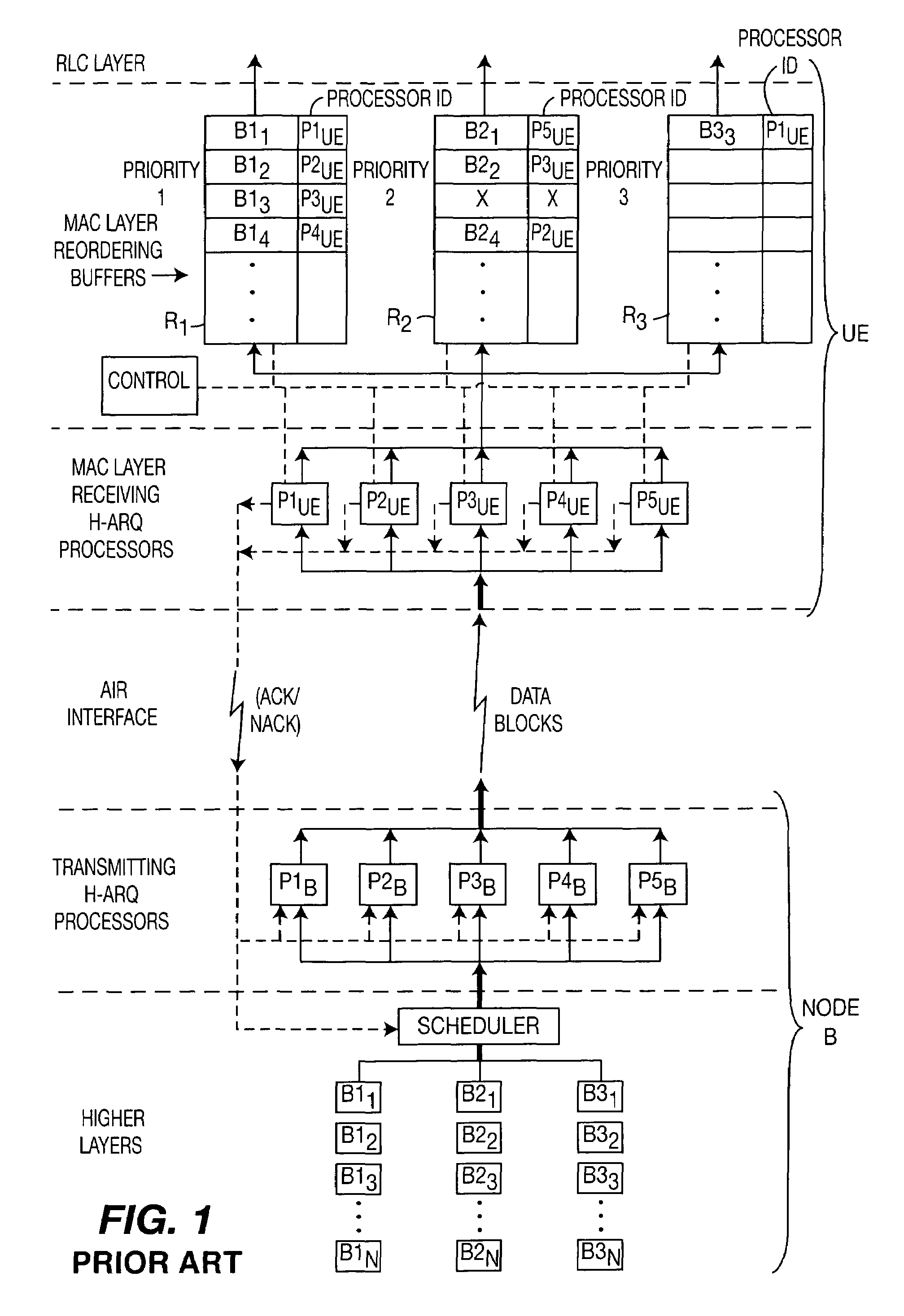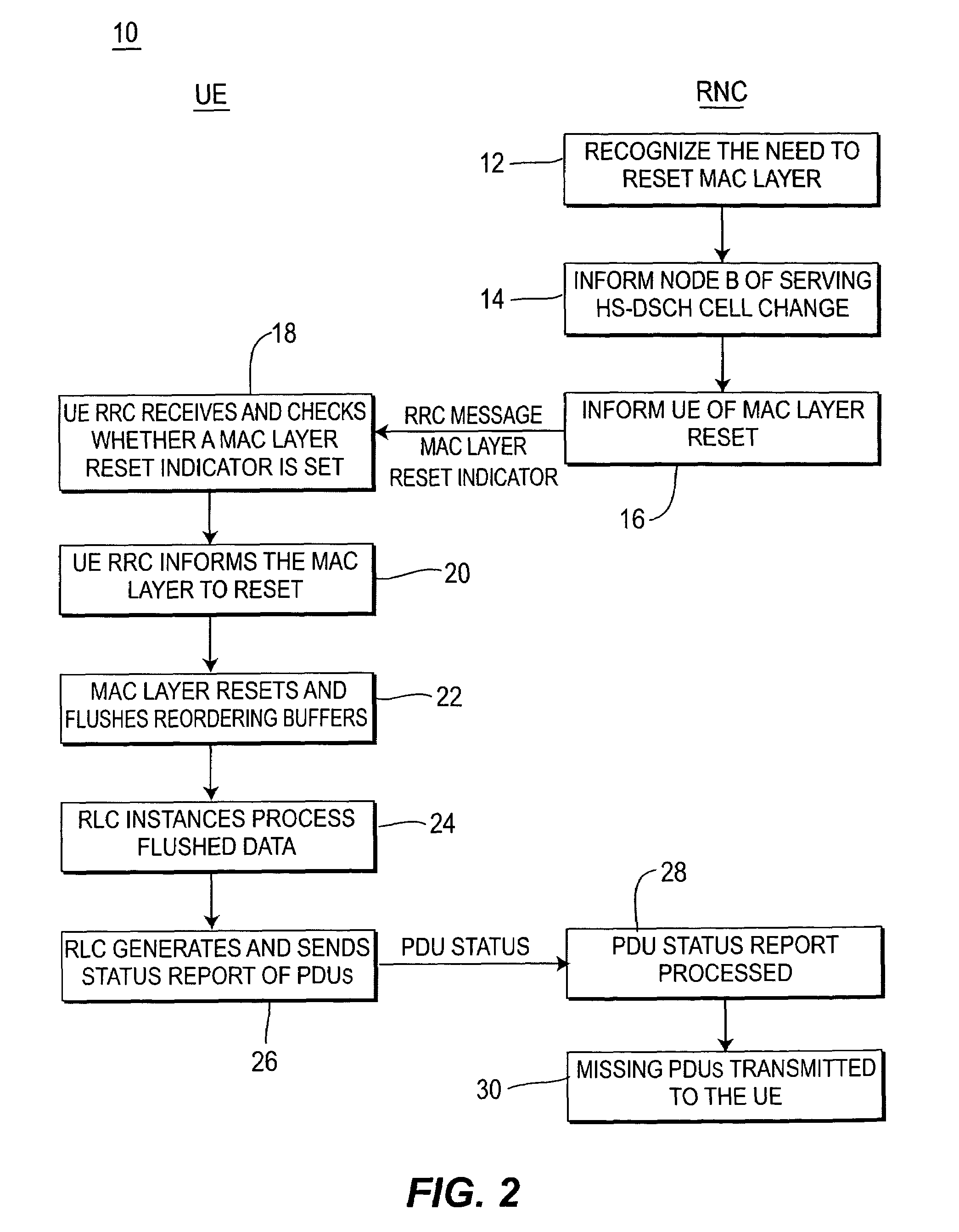System for efficient recovery of Node-B buffered data following MAC layer reset
- Summary
- Abstract
- Description
- Claims
- Application Information
AI Technical Summary
Benefits of technology
Problems solved by technology
Method used
Image
Examples
first embodiment
[0025]Referring to the flow diagram of FIG. 2, the present invention which comprises a method 10 of determining the status of the PDU transmissions to the UE with minimal delay following a MAC layer reset condition is shown. The procedure commences with the RNC recognizing the need to reset the UE MAC layer (step 12).
[0026]One possible cause for a UE MAC layer reset is in the event of a serving HS-DSCH cell change. The RNC informs the Node B of the HS-DSCH cell change (step 14) in the case of an Inter-Node B serving HS-DSCH cell change, and also in the case of an Intra-Node B serving HS-DSCH cell change where the source Node B is the same as the target Node B, but where transmission queues cannot be rerouted from the source to target cell. In both of these cases, a MAC reset is required. Along with the HS-DSCH cell change indication, the UE is informed of the MAC layer reset requirement by the RNC, as indicated via a Radio Resource Control (RRC) message (step 16). It should be noted...
second embodiment
[0039]the present invention comprises a method 40 for determining the status of PDU transmissions to the UE with minimal delay following a MAC layer reset condition and is shown in FIG. 3. After the RNC recognizes the need for a MAC layer reset (step 12) and the Node B and UE are notified (steps 14 and 16), the RNC halts all downlink HS-DSCH transmissions (step 17). Note that step 17 may occur in advance of step 14 or 16 without any adverse consequences. The RNC subsequently receives the PDU status report (step 32). The PDU status report indicates the PDUs lost as a result of the MAC reset and potentially additional PDUs lost in the source Node B the case of an HS-DSCH cell change. The PDU status report is then processed (step 34) and the missing PDUs are retransmitted to the UE (step 36). The RNC initiates transmission in the new cell by scheduling transmission of lost PDUs that require retransmission first. The RNC then resumes PDU transmissions (step 38) at the point where transm...
third embodiment
[0040]Referring to FIG. 4, a method 50 in accordance with the present invention is shown. This method 50 is similar to the method 40 shown in FIG. 3. However, instead of restarting the downlink HS-DSCH transmissions to the UE in response to the receipt of a PDU status report at step 32 as shown in FIG. 3, the method 50 of this embodiment of the present invention restarts transmissions upon the receipt of a “trigger”, or a predetermined event (step 19). In a first example, the trigger may comprise the establishment of the transport channel in UTRAN which, as would be understood by those of skill in the art, is accomplished by an RNC with the new “target” Node B signaling procedure. The reception in the RNC of a confirmation generated by the Node B is used as the trigger.
[0041]In a second example, the trigger may comprise reception or detection of the “in-sync” indication. Upon establishment of dedicated resources in the target Node B, an “in-sync” indication may be determined in the ...
PUM
 Login to View More
Login to View More Abstract
Description
Claims
Application Information
 Login to View More
Login to View More - R&D
- Intellectual Property
- Life Sciences
- Materials
- Tech Scout
- Unparalleled Data Quality
- Higher Quality Content
- 60% Fewer Hallucinations
Browse by: Latest US Patents, China's latest patents, Technical Efficacy Thesaurus, Application Domain, Technology Topic, Popular Technical Reports.
© 2025 PatSnap. All rights reserved.Legal|Privacy policy|Modern Slavery Act Transparency Statement|Sitemap|About US| Contact US: help@patsnap.com



